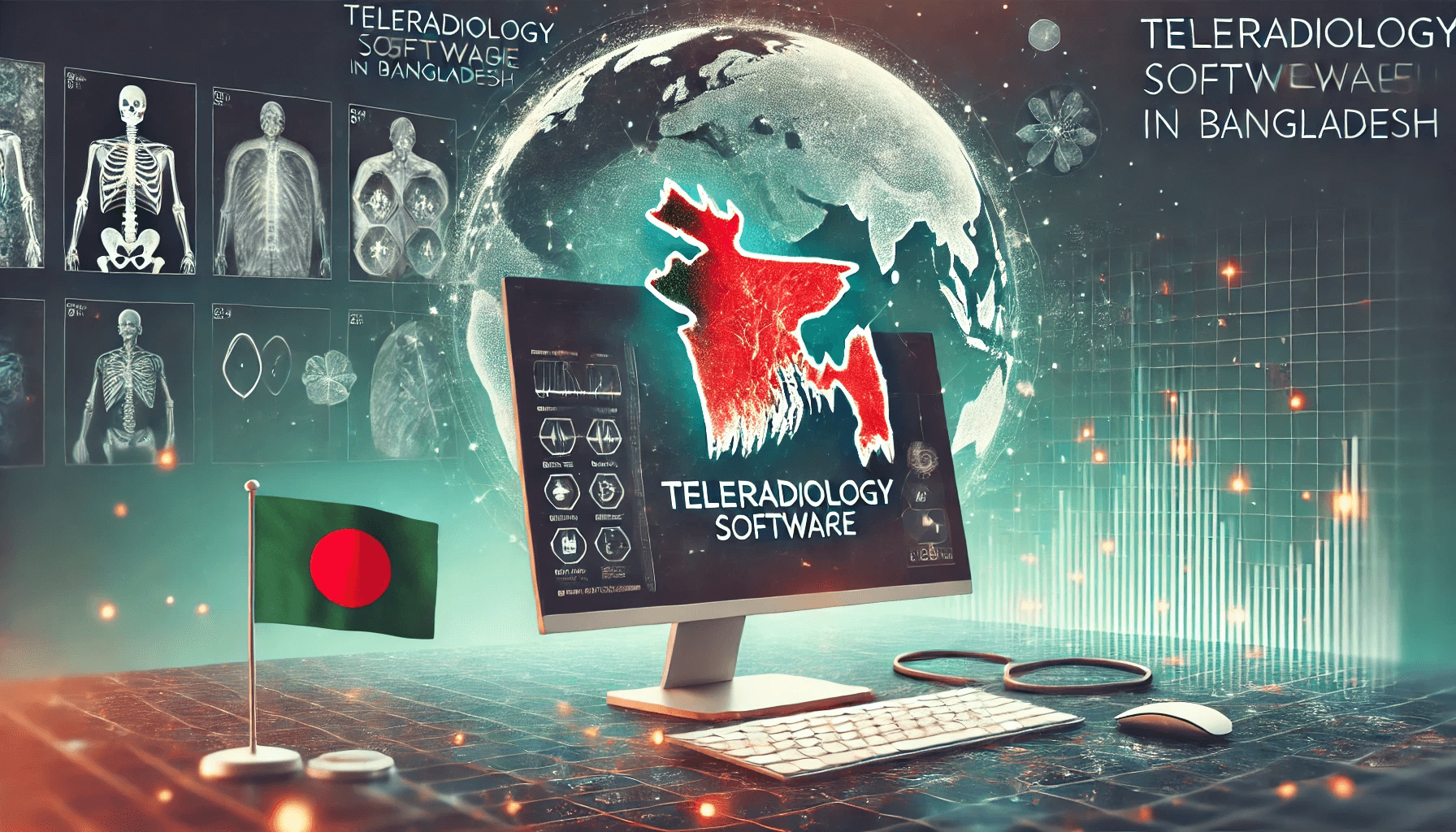
Teleradiology Software in Bangladesh
Teleradiology has emerged as a game-changer in the healthcare industry, bridging gaps in medical imaging and diagnosis across geographic barriers. In Bangladesh, where healthcare infrastructure often struggles to meet the needs of its growing population, teleradiology software is proving to be an invaluable tool. This article explores what teleradiology services are, their features, types, costs, and the current state of teleradiology software in Bangladesh.
What is Teleradiology Service?
Teleradiology is the process of transmitting radiological images, such as X-rays, CT scans, MRIs, ECG, and ultrasounds, from one location to another for interpretation by a radiologist. This service allows healthcare facilities, especially in rural or underserved areas, to provide timely and accurate diagnoses without the physical presence of a radiologist. Teleradiology ensures that patients receive expert opinions, often within minutes, which can be life-saving in emergency situations.
Features of Teleradiology Service
Teleradiology services come with several advanced features that make them an essential part of modern healthcare. Key features include:
Remote Access: Radiologists can access and interpret images from anywhere, reducing delays in diagnosis.
Integration with PACS: Picture Archiving and Communication Systems (PACS) ensure that images are securely stored and easily retrievable.
High-Quality Imaging: Advanced compression technologies maintain image quality while facilitating faster transmission.
HIPAA Compliance: Ensures patient data security and privacy during image transmission.
Real-Time Reporting: Enables radiologists to provide immediate feedback for emergency cases.
Multilingual Support: Essential in a country like Bangladesh, where communication in local languages is vital.
AI-Powered Tools: AI integration aids in detecting abnormalities and speeding up the diagnostic process.
Types of Teleradiology Services
Teleradiology services can be categorized into several types based on their application and delivery model:
Emergency Teleradiology: Teleradiology service is very effective for emergency teleradiology. It provides rapid imaging interpretation for critical cases such as trauma or stroke.
Outsourced Teleradiology: This service ensures outsource radiology services to third-party providers to manage workloads efficiently.
Subspecialty Teleradiology: It is tough to ensure specialist radiologist without teleradiology software. It offers expertise in specific fields like neuroradiology, musculoskeletal radiology, or pediatric radiology.
Daytime/Nighttime Teleradiology: Maximum hospital and diagnostics center cannot afford 24/7 radiologists for their solution. It addresses the shortage of radiologists during off-hours by providing 24/7 coverage.
Cloud-Based Teleradiology: Uses cloud technology for storing and accessing images, making it cost-effective and scalable.
Cost of Teleradiology Software
The cost of teleradiology software can vary widely based on several factors, such as the features, scalability, licensing model, and vendor reputation. Here's a breakdown of cost considerations:
1. Initial Licensing Costs
Basic Teleradiology Software: $5,000–$20,000 (one-time or annual).
Advanced Software with AI Integration: $25,000–$100,000+.
2. Subscription/Cloud-based Models
Per User/Per Month Pricing: $200–$2,000 per radiologist.
Enterprise Plans: $10,000–$50,000+ per year for medium to large setups.
3. Customization
Custom integrations with hospital PACS (Picture Archiving and Communication System) or EMR (Electronic Medical Records): $5,000–$50,000.
4. Hardware Costs
High-quality diagnostic monitors: $2,000–$6,000 per monitor.
Workstations: $1,500–$5,000 each.
Servers or cloud infrastructure: $10,000–$50,000+ for large-scale solutions.
5. Maintenance and Support
Annual maintenance fees: 10–20% of the software cost.
24/7 technical support: $5,000–$20,000 annually.
6. Add-Ons
AI tools for diagnostic assistance: $10,000–$50,000+.
Mobile viewing apps: $2,000–$10,000.
Advanced analytics/reporting: $5,000–$15,000.
Example Scenarios:
Small Clinics: $10,000–$50,000 (basic software with minimal licensing and hardware).
Medium Hospitals: $50,000–$200,000 (advanced features and integrations).
Large Healthcare Systems: $200,000+ (enterprise-grade, AI, and scalability).
Subscription based hospital and diagnostics centre: $100 for installation and report based payment.
Teleradiology Software in Bangladesh
The adoption of teleradiology software in Bangladesh is growing steadily, driven by the increasing demand for accessible healthcare. Local hospitals and diagnostic centers are investing in software that integrates seamlessly with their existing infrastructure. Some key players and trends include:
Local Providers: Companies in Bangladesh are developing cost-effective solutions tailored to the needs of local healthcare providers.
AI Integration: Startups and tech firms are working on AI-powered teleradiology tools to improve diagnostic accuracy and efficiency.
Government Support: The government’s digital healthcare initiatives aim to make teleradiology more accessible in rural areas.
Cloud Adoption: Cloud-based software is gaining popularity for its scalability and cost-effectiveness, particularly for smaller clinics.
Bangla Puzzle Limited provides PACS software and Teleradiology solutions.
Bangla Puzzle Limited
House: 13/3, Road: 2,
Shyamoli, Dhaka- 1207
+8801880811048
Conclusion
Teleradiology software is revolutionizing healthcare in Bangladesh, ensuring that quality diagnostic services reach even the most remote areas. With advancements in technology and increasing investment, the future of teleradiology in Bangladesh looks promising. By leveraging these tools, the country can overcome many of its healthcare challenges, providing better outcomes for patients nationwide.
